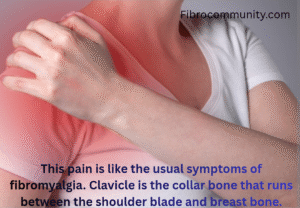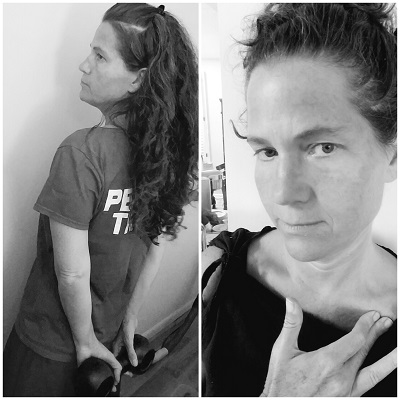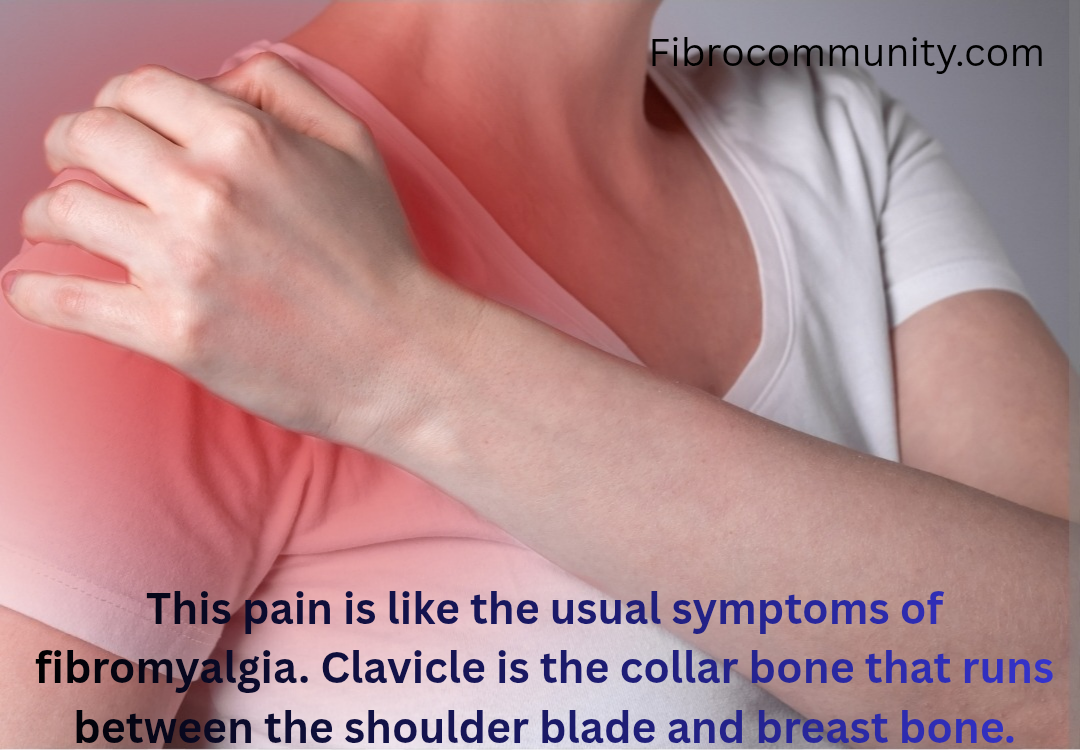Clavicle or shoulder pain in fibromyalgia is like any other symptom in that it can easily wax and wane, but might be more common than you think.
With a recent shoulder injury (and labral tear) myself, I have seen even more clearly the process of shoulder injuries, stiffness, and how fibromyalgia symptoms can “interplay” with common shoulder/ clavicle injuries or tears.
One thing I do in working with fibromyalgia, is to convey the importance of the “process”
The shoulder is a great example. I know how great the pain can be, and how it can interrupt sleep and cause limitations, but when we more correctly work through the process, there are greater rewards.
Continue to follow here in the shoulder related articles, and in the live interactive videos as I update this process. (in fact, I recently showed some of my own progress and what I have been doing in a video at the bottom of this article)
It’s common for those with fibromyalgia to experience pain in the shoulders, upper arms, and/or clavicle, which is the collarbone that runs between the shoulder blade and breastbone.
Some people might suffer continuous pain while others notice it more when they’re overly tired, or when they are using certain repetitive motions.
The way people with fibromyalgia describe their shoulder and clavicle pain varies as well. Some describe it as a stretching or twisting muscular sensation, while others say it’s more of an indescribable ache that cuts down to the bone.
The pain may stay in one place for some people while it tends to move down the arms, across the chest, or into the neck for others.
If you feel the pain radiating and moving, it is likely to be connected to trigger points. These trigger points that we often refer to can be dormant or active, and can become activated by a specific turn, move, injury, illness, or accident.
What to Do If You’re Suffering Shoulder Pain in Fibromyalgia
If you or someone you care about is suffering from consistent or recurring pain in the shoulders, upper arms, and/or clavicle, don’t assume that it’s only due to fibromyalgia.
Some people suffer with this pain for months or even years without checking with a doctor because they assume that it’s the fibro. There are many other things that can cause pain in this area of the body.
Other possible causes of shoulder pain in fibromyalgia include not only trigger points, but a recent accident of any kind, even one that occurred in another area of the body. Increased neck pain due to an accident or trauma to the neck can also make you more susceptible to pain around the clavicle and shoulder areas.
In fact, if you suffer with morning stiffness around your neck area, this can easily radiate in the collar bone/clavicle area. Read more here about neck pain in fibromyalgia. It might be obvious, but avoid wearing a purse on one side of the body (which can greatly exacerbate clavicle pain) and consider wearing a light backpack purse if possible.
Improper posture of the upper body can also instigate this pain or exacerbate it when already there. With posture, most people tend to lean forward more than they realize, and this is easily exacerbated by excessive use of cellphones, computers, desk work, carrying kids, washing dishes, and more.
 Posture is important to reducing pain in the shoulder/clavicle area
Posture is important to reducing pain in the shoulder/clavicle area
Starting to be more aware of your posture is a great start. When you are standing, or maybe standing in a line, bring your hands back together on your lower back.
Is this uncomfortable for you? Then yes, it likely means that your posture is suffering and contributing to pain in the upper arms (humeral area), shoulders, neck, and the clavicle area. You can also increase this posture technique by adding a free weight, 1-8 pounds free weight is great.
And, just like other areas of the body where we work to restore the fascia, you can gently work just under the clavicle as I am showing here. Refer to the fitness page below where I have many videos on working this and other vulnerable areas of the fibro body.
Strategies for Pain Management of Clavicle
or Shoulder Pain in Fibromyalgia
This clavicle pain is often assigned to fibromyalgia if no other causes are found and you have already been diagnosed with fibro. At that time, you may need to find ways to treat or ease the pain just as you do with many other fibromyalgia symptoms.
Here are some strategies that may help you limit interference with your daily life:
- Invest in a good quality neck support. Alternate with ice and heat on the back of neck and wrapping around the clavicle. Wrap the ice in a towel as needed to increase tolerance over time. 20 minutes ice, 20 minutes heat. During this time, stretch your neck back by lying on the bed flat, no pillow.
- Refer to our fitness page, Fibro Fit People, where I offer many ongoing suggestions to dealing with pain and symptoms in all areas of the body. See the video section there. Many of those address the upper body.
- Keep working at a more consistent sleep schedule. This is difficult for many fibro bodies, but it can make a world of difference in terms of your pain levels. Try to at least challenge yourself to stay off the internet a couple hours before bedtime. This will also help increase melatonin production naturally.
Many of us living with long term fibromyalgia have found that improving our physical condition and increasing overall agility can have an impact on the intensity of pain, symptoms and our ability to maintain more independence. Remember what I so often say regarding injury prevention and overall fitness levels which is “our independence depends on it”
In some cases, your doctor may perform tests to look for interior causes of the pain. If nothing is found, they may refer you to a specialist who can perform an ultrasound to look for problems that are commonly missed by primary care physicians. You may even need an MRI to take a closer look.
Are you a side sleeper?
Sleeping on the side can tend to constrict the clavicle area on the side you are sleeping on. However, if you are one of those people who falls asleep more easily on your side, then try to at least switch positions if possible to avoid more constriction around this area.
reference<https://www.living-smarter-with-fibromyalgia.com/shoulder-pain-in-fibromyalgia.html?fbclid=IwAR0sckdzuy4Eoi7HbA_CWQlRmReoYzEEanB3ahWakZio8oxMBPB_1Prq_fc



